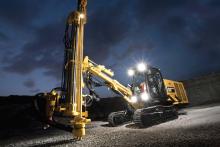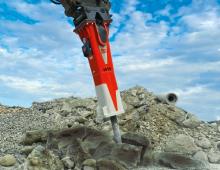
It is now 50 years since the first hydraulic breakers were manufactured. Atlas Copco Construction Tools, based at Essen in Germany, is celebrating the 50th anniversary since it launched its very first hydraulic breaker. Meanwhile similar celebrations are being held in France by Montabert, writes Mike Woof.
Krupp Berco Bautechnik’s rig-mounted hydraulic breaker, the HM 400, attracted huge interest when it was shown at the Hannover fair in 1967 and more than 2,000 units were sold. Meanwhile Montabert’s breakers also attracted strong sales, initially in France and then wider afield. Both companies developed their breakers using hydraulic rockdrill technology. Hydraulic power was used to transfer energy to the work piece, providing a powerful tool for breaking rock and these units were soon taken up by quarry firms wanting to break up over-sized material or unblock the feeders for crushing plant.
These early hydraulic hammers had their shortcomings however. Rockdrills have the drill bit in constant contact with the rock, but this is not always feasible with a hydraulic breaker. As a result, early generation hydraulic breakers were prone to failure if the tool was not in contact with material to be broken and blank-firing for even a short period.
While Krupp and Montabert pioneered the breaker, other firms soon joined the market as well, such as
Since that time the technology has continued to improve. The science involved in determining how energy is transferred within the breaker, how heat, noise and hydraulic forces behave, is extremely complex. But these units have become ever more popular and taken their place amongst the most widely used hydraulic attachments in the construction and quarrying markets.









